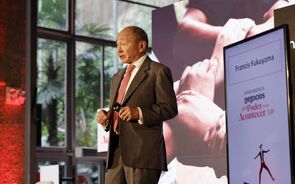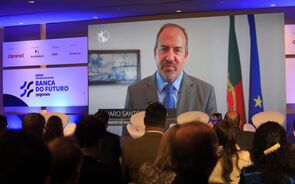Motorola
1 Mensagem
|Página 1 de 1
Motorola
Jan. 18 (Bloomberg) -- Motorola Inc., the world's second- biggest mobile-phone maker, said fourth-quarter net income rose to $654 million as demand surged for higher priced handsets, including the $499 Razr model.
Net income increased to 27 cents a share, from $489 million, or 20 cents, the Schaumburg, Illinois-based company said in statement today. Sales rose 27 percent to $8.84 billion.
Chief Executive Ed Zander, who completed his first year at the Schaumburg, Illinois-based company this month, cut costs by eliminating 1,000 jobs and divesting the money-losing semiconductor unit. He reorganized remaining units to get products on the market sooner and avoided component shortages that crimped 2003 sales. That fueled a 27 percent revenue gain.
``Last year they were able to squeeze a lot of the costs out of the company and come out with some good streams of profit with the new CEO coming in,'' said Daniel Morgan, who helps oversee $6 billion at Synovus Investment Advisors in St. Petersburg, Florida, before the results were released.
Operating margin, a measure of profitability, widened to 11.7 percent. That left Zander closer to delivering on a pledge to increase the margin to 15 percent.
Profit from continuing operations, which excludes the spun- off chip division, was 28 cents. That compares with 24 cents, the average estimate of 28 analysts in a Thomson Financial survey.
Shares of Motorola rose 40 cents $17.43 at 4 p.m. in New York Stock Exchange composite trading. The stock surged 37 percent last year.
Taking Share Back
Last quarter, Motorola may have won back market share it lost to larger rival Nokia Oyj in the third period, said analysts including Alkesh Shah at Morgan Stanley in New York, who rates the shares ``equalweight'' and doesn't own them.
Zander is benefiting from rising demand for mobile phones that have sleek designs and deliver functions such as taking photos and Web surfing. In November, the company introduced the Razr, an all-metal phone that's a half-inch think when folded.
Zander will follow that with other higher-priced models, including one that plays songs using Apple Computer Inc.'s iTunes software. Ron Garriques, the head of Motorola's personal devices unit, two weeks ago demonstrated a prototype for the handset, which is due to be released in the first half of 2005.
Nokia's share of the handset market rose to 30.6 percent in the third quarter from 28.8 percent in the second, said Strategy Analytics. Motorola's fell to 13.9 percent from 15.4 percent.
Handset shipments probably rose 30 percent to 670 million units last year and may rise 8 percent this year, according to October estimates by Boston-based researcher Strategy Analytics.
Reorganization
Profit margins fattened with the company's spinoff of the semiconductor unit, now called Freescale Semiconductor Inc. and based in Austin, Texas. Freescale, the third-biggest U.S. semiconductor maker behind Intel Corp. and Texas Instruments Inc., also was scheduled to report fourth-quarter results today.
Zander earlier this month reorganized the remaining five businesses into four: personal devices, networks, connected home and government and enterprise. Products that used to be sold by the so-called integrated electronics systems sector unit were spread through the rest.
President Mike Zafirovski, the only internal candidate for the chief executive job given to Zander in December 2003, said last week he would leave the company at the end of this month. Zander won't replace Zafirovski and instead will have heads of the business units report directly to him.
In October, the company forecast fourth-quarter profit of as much as 26 cents a share on sales of as high as $9.6 billion.
(To listen to a conference call discussing Motorola's fourth- quarter results, scheduled for 5 p.m. New York time, dial (1)(517) 623-4949, visit http://www.motorola.com/investor or click on {LIVE <GO>}.)
Net income increased to 27 cents a share, from $489 million, or 20 cents, the Schaumburg, Illinois-based company said in statement today. Sales rose 27 percent to $8.84 billion.
Chief Executive Ed Zander, who completed his first year at the Schaumburg, Illinois-based company this month, cut costs by eliminating 1,000 jobs and divesting the money-losing semiconductor unit. He reorganized remaining units to get products on the market sooner and avoided component shortages that crimped 2003 sales. That fueled a 27 percent revenue gain.
``Last year they were able to squeeze a lot of the costs out of the company and come out with some good streams of profit with the new CEO coming in,'' said Daniel Morgan, who helps oversee $6 billion at Synovus Investment Advisors in St. Petersburg, Florida, before the results were released.
Operating margin, a measure of profitability, widened to 11.7 percent. That left Zander closer to delivering on a pledge to increase the margin to 15 percent.
Profit from continuing operations, which excludes the spun- off chip division, was 28 cents. That compares with 24 cents, the average estimate of 28 analysts in a Thomson Financial survey.
Shares of Motorola rose 40 cents $17.43 at 4 p.m. in New York Stock Exchange composite trading. The stock surged 37 percent last year.
Taking Share Back
Last quarter, Motorola may have won back market share it lost to larger rival Nokia Oyj in the third period, said analysts including Alkesh Shah at Morgan Stanley in New York, who rates the shares ``equalweight'' and doesn't own them.
Zander is benefiting from rising demand for mobile phones that have sleek designs and deliver functions such as taking photos and Web surfing. In November, the company introduced the Razr, an all-metal phone that's a half-inch think when folded.
Zander will follow that with other higher-priced models, including one that plays songs using Apple Computer Inc.'s iTunes software. Ron Garriques, the head of Motorola's personal devices unit, two weeks ago demonstrated a prototype for the handset, which is due to be released in the first half of 2005.
Nokia's share of the handset market rose to 30.6 percent in the third quarter from 28.8 percent in the second, said Strategy Analytics. Motorola's fell to 13.9 percent from 15.4 percent.
Handset shipments probably rose 30 percent to 670 million units last year and may rise 8 percent this year, according to October estimates by Boston-based researcher Strategy Analytics.
Reorganization
Profit margins fattened with the company's spinoff of the semiconductor unit, now called Freescale Semiconductor Inc. and based in Austin, Texas. Freescale, the third-biggest U.S. semiconductor maker behind Intel Corp. and Texas Instruments Inc., also was scheduled to report fourth-quarter results today.
Zander earlier this month reorganized the remaining five businesses into four: personal devices, networks, connected home and government and enterprise. Products that used to be sold by the so-called integrated electronics systems sector unit were spread through the rest.
President Mike Zafirovski, the only internal candidate for the chief executive job given to Zander in December 2003, said last week he would leave the company at the end of this month. Zander won't replace Zafirovski and instead will have heads of the business units report directly to him.
In October, the company forecast fourth-quarter profit of as much as 26 cents a share on sales of as high as $9.6 billion.
(To listen to a conference call discussing Motorola's fourth- quarter results, scheduled for 5 p.m. New York time, dial (1)(517) 623-4949, visit http://www.motorola.com/investor or click on {LIVE <GO>}.)
-
Visitante
1 Mensagem
|Página 1 de 1
Quem está ligado:
Utilizadores a ver este Fórum: cali010201, Goya777, hugob0ss, Kiko_463, m-m, malakas, MR32, Nuno V, nunorpsilva, PAULOJOAO, Purificaçao, PXYC, SerCyc, Shift72, Simplório, tami, trilhos2006, yggy e 173 visitantes


